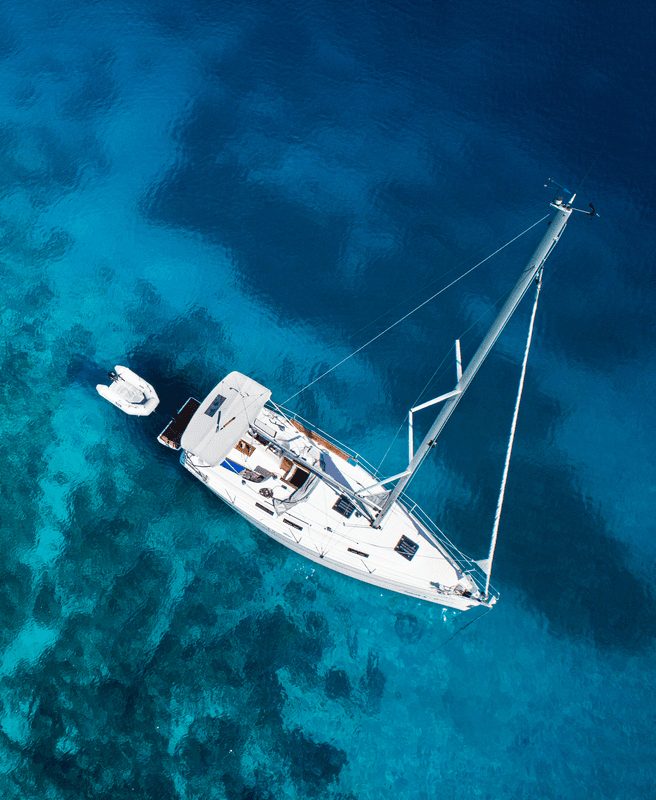How to Open a Bank Account in Mongolia
March 30, 2023
Dateline: Ulaanbaatar, Mongolia
My arrival to Ulaanbaatar was a rather surreal experience. Upon clearing immigration with a different passport than I expected to use, I got in a taxi with one of the nicest and most patient drivers I’ve ever found at any airport.
We drove the ten miles from Chinggis Khan airport – who else would they name it after? – into the city center, in an experience that in many ways parallels the growth of the country. From vast open lands to a small but growing capital city that has seen lots of new construction as the country’s economy grows.
As I got out of the taxi on the opposite side of the street, I prepared to cross on a green light only to be almost hit by a bus that blew right through a red light. Charming people and bad drivers; this country seems promising.
Banking in Mongolia
For years, I’ve heard various people talking about banking in Mongolia as a way to take advantage of the country’s rise. Several years ago, Mongolia was the world’s fastest growing economy, with growth rates nearing 20%. It all came on the backs of a natural resources boom that saw foreign investors flood into the country’s mining space with the idea of investing in Mongolia to export to neighboring Russia and China.
As an investor at heart, I personally find opening a bank account seems a rather poor way to participate in a country’s rise as you have little to benefit from and all the risk as things stabilize.
However, perhaps the chief reason people inquire about banking in Mongolia is the country’s notoriously high interest rates. It’s true: deposit money in the local currency – the tugrik – and you can earn as much as 10.25% on a one-year CD. (Previously rates went as high as 16%.)
US dollar deposits go as high as the 6% to 7% range.
It was even a topic of discussion in the ballroom here at the Shangri-la Hotel; bankers from the country and from the west are here this week discussing why rates are so high and how to keep the banks in good shape.
The Good
High interest rates are among the best attributes here. The country is starving for cash to loan out at rates as high as 30%, which means they have to pay high rates to attract capital, especially in local currency.
This is nothing unique to Mongolia; my developer friend in Georgia is currently seeking secured construction loans and offering 17%. Capital isn’t cheap in many places.
Additionally, Mongolian banks offer perhaps the most diverse list of currencies I’ve ever seen. Not only can you bank in Mongolian tugrik and US dollars, but everything from euros to Chinese renmibi to South Korean won to Russian rubles. One bank I went to advertised 16 different currencies available, meaning it’s an easy place to diversify out of dollars and into currencies you might not be able to get exposure to elsewhere.
On top of that, exchange rates are cheap; a one-way transaction from dollars to tugriks clocked in at 0.4%. (Rates on currencies like the Hong Kong or Australian dollar are noticeably higher.)
Mongolian banks also accept small deposits, meaning anyone can get in on the action. The lowest minimum account to open is a “domestic account”, which seems to be the default account available and offers a debit card usable only in Mongolia. While that is of little use to any nomad, there is no minimum deposit. Other accounts require anywhere from $2 to $5 to get started, and fees for issuing debit cards are quite reasonable.
The Bad
The downside of that thirst for cash is that banks are often shaky. One of the lawyers I met here regaled me with stories of employees in some banks doing some shady stuff, or stories of other banks having bad management.
For example, Moody’s has been particularly unpleasant toward banks here, having issued consistent downgrade warnings for ten years now, with a current rating of B3.
The general consensus is that banks here are not very well-managed. Accordingly, I was expecting a bit more of an open attitude here considering the country is aggressively seeking capital.
Also a negative is my general experiences at the banks. While the staff at the major banks was in no way rude or unhelpful, English skills here are pretty bad. I thought my mediocre Russian would come in handy seeing the proximity, but I was wrong. Even the “go-to English speaker” in the office didn’t understand many basic requests, which led to my first account being a domestic card account valid only in Mongolia.
One other note of caution is the local currency itself. While the appeal of high interest rates is great, do know that the currency has plummeted from about 1,400:1 against the dollar to more than 3,510:1 in the last few years. All of the guys who said buying tugrik was a “can’t miss” opportunity a few years back have lost half their money since then; even with interest they’re underwater. So know what you’re getting into.
Who Can Open a Bank Account?
Any individual can turn up at the bank with their passport and request to open account. As indicated, you’ll need to make sure you specify the type of account you want and ensure that the teller understands, or else you’ll end up with something you don’t want. Opening a term deposit could prove tricky as many tellers are unsure of how to send money in from overseas.
I chose TDB Bank as the best bank in Mongolia based on recommendations, however you can also try Golomt Bank, Khan Bank, or XacBank.
Chances are you’ll be asked a few questions about why you want to open an account. No one ever seems to comprehend my answer of “for fun”, so you should probably have a more compelling answer about wanting to invest in the tugrik or plans to spend more time here.
As with many banks in markets like this, the bank’s first guess is that you work for an embassy or some foreign company doing business here, so if you don’t have a local job you’ll need to explain.
Basically, the hardest parts of opening an account as an individual are choosing from a gazillion different account types, and then getting the teller to open it. Nothing too difficult.
You can not, however, open accounts for foreign entities unless they are registered in Mongolia. This is an increasing trend thanks to countries signing on to anti-money laundering treaties; banks have become so insular due to these laws that they won’t open accounts for, say, a Hong Kong company.
I saw this in Azerbaijan as well, recently, where your company needs a Tax ID number just to open an account. In most cases, it’s more hassle than it’s worth. As much as these countries’ banks need capital, their laws prohibit them from accepting foreign companies.
On a side note, I do believe that it will become almost impossible for offshore companies to open low-balance accounts within a few years. Pretty soon, if you don’t have at least $25,000 to $50,000 to deposit, few banks will accept you. It’s an unfortunate but realistic trend, and even seemingly open banking markets like Mongolia are part of it.
Why Bank in Mongolia
If you’re an offshore geek like myself, the words of Pokemon apply: “gotta catch ’em all”.
For those of you who prefer museums to bank offices, and who aren’t doing research for a widely-read blog, the reasons to bank in Mongolia are less clear.
Surely, it’s rather easy to open a personal account here and obtain an international debit card. However, there are other countries that are just as easy, have better English-speaking staff, and that have easier flights.
For me, the key reason for banking here is access to the tugrik OR as a call option for future business here. If you think that the tugrik’s fresh lows against the dollar won’t last and are prepared to take the risk to earn 16%, the it’s not a bad option if you happen to already be in Asia.
Of course, high interest rates alone mean little, service matters too. And this is where Mongolian banks become problematic. After all, this is a part of the world practically untouched by anyone until recently. There is still a rather insular feeling here.
Unless you have a compelling reason to bank here, there are probably better options.


Does Puerto Rico Pay Taxes to the US?
It’s a common question and one that often fuels confusion, debate, and a fair share of misinformation – Do residents of Puerto Rico actually pay US federal taxes? When most people think of US tax obligations, they naturally assume they apply uniformly across all US citizens. But when it comes to Puerto Rico, things are […]
Read more

Zug Canton Taxes: The Ultimate Destination for Wealth Management in Switzerland
Switzerland’s global reputation is built not just on stunning views of Alpine peaks and serene lakes but also on a foundation of exceptional quality of life, world-class infrastructure and investor-friendly tax policies. The results speak for themselves: efficient public transport seamlessly links cities and villages; the standard of living regularly ranks among the highest in […]
Read more

How Smart Investors Use Venture Capital to Build Wealth
Big companies like Google, Amazon, Facebook and Apple all started out as bold ideas backed by venture capital. Decades later, the same firms are household names, as familiar to most people as electricity, the internet, or the telephone. But hindsight is a fickle friend. The truth is, it wasn’t always so obvious they’d succeed. These […]
Read more




